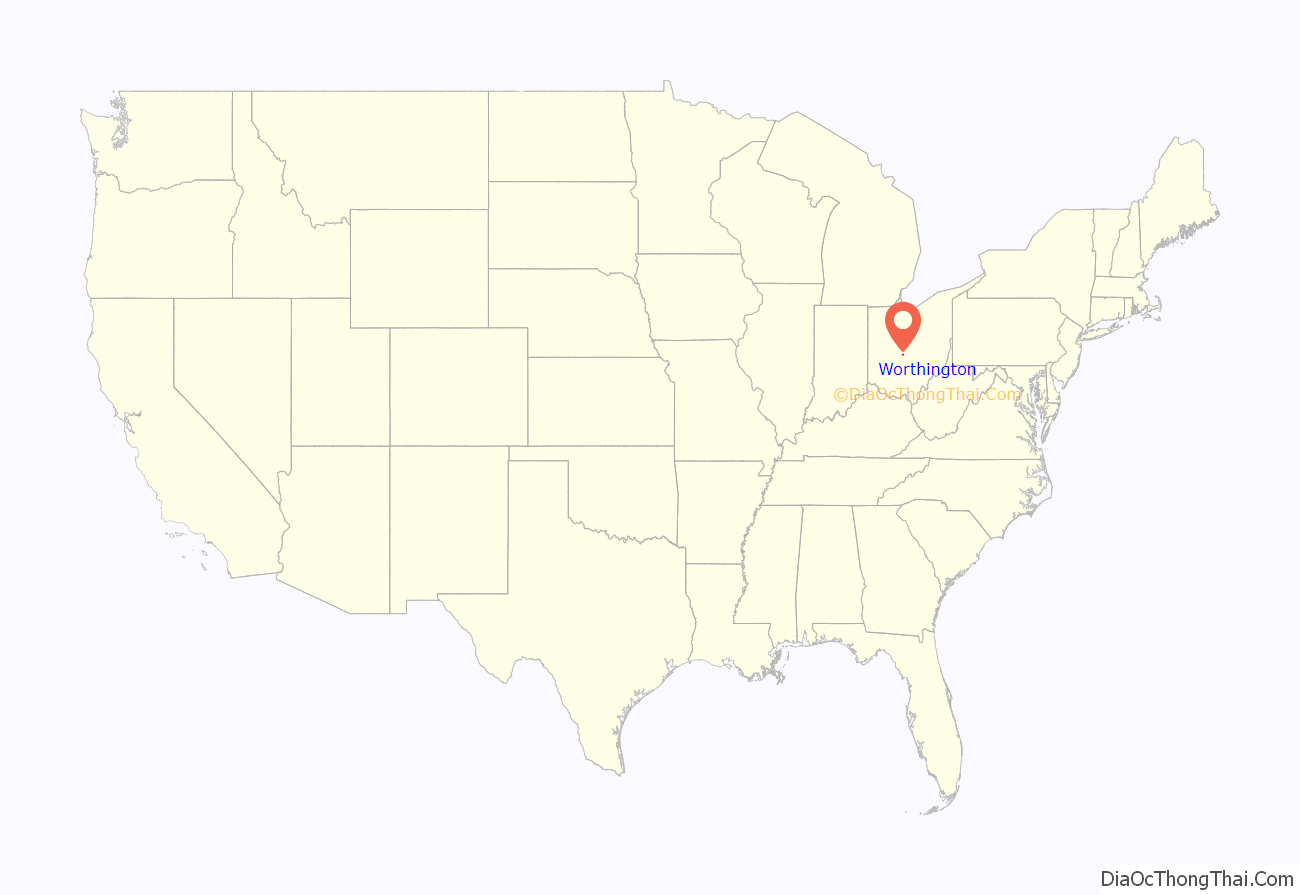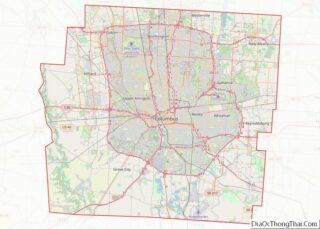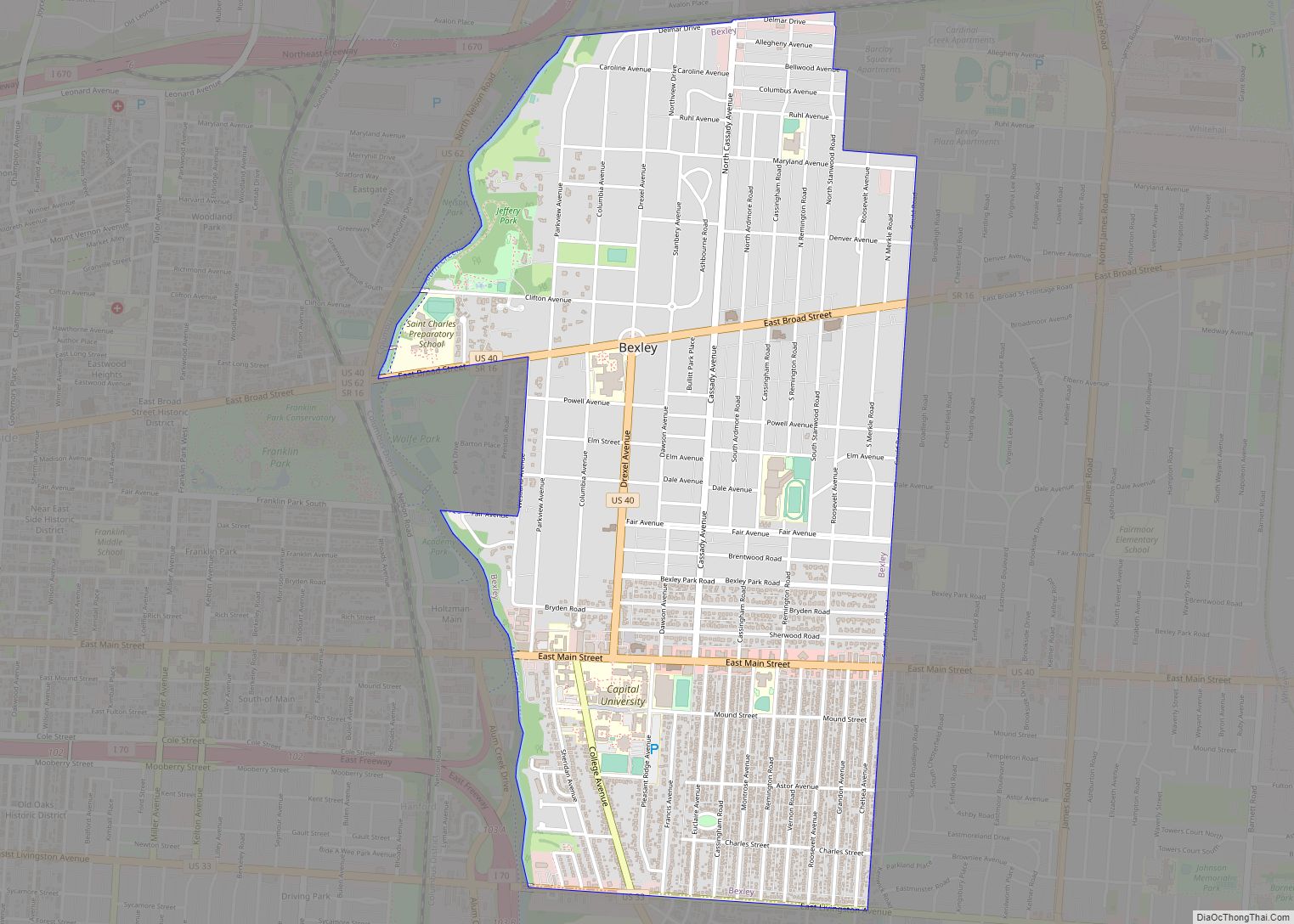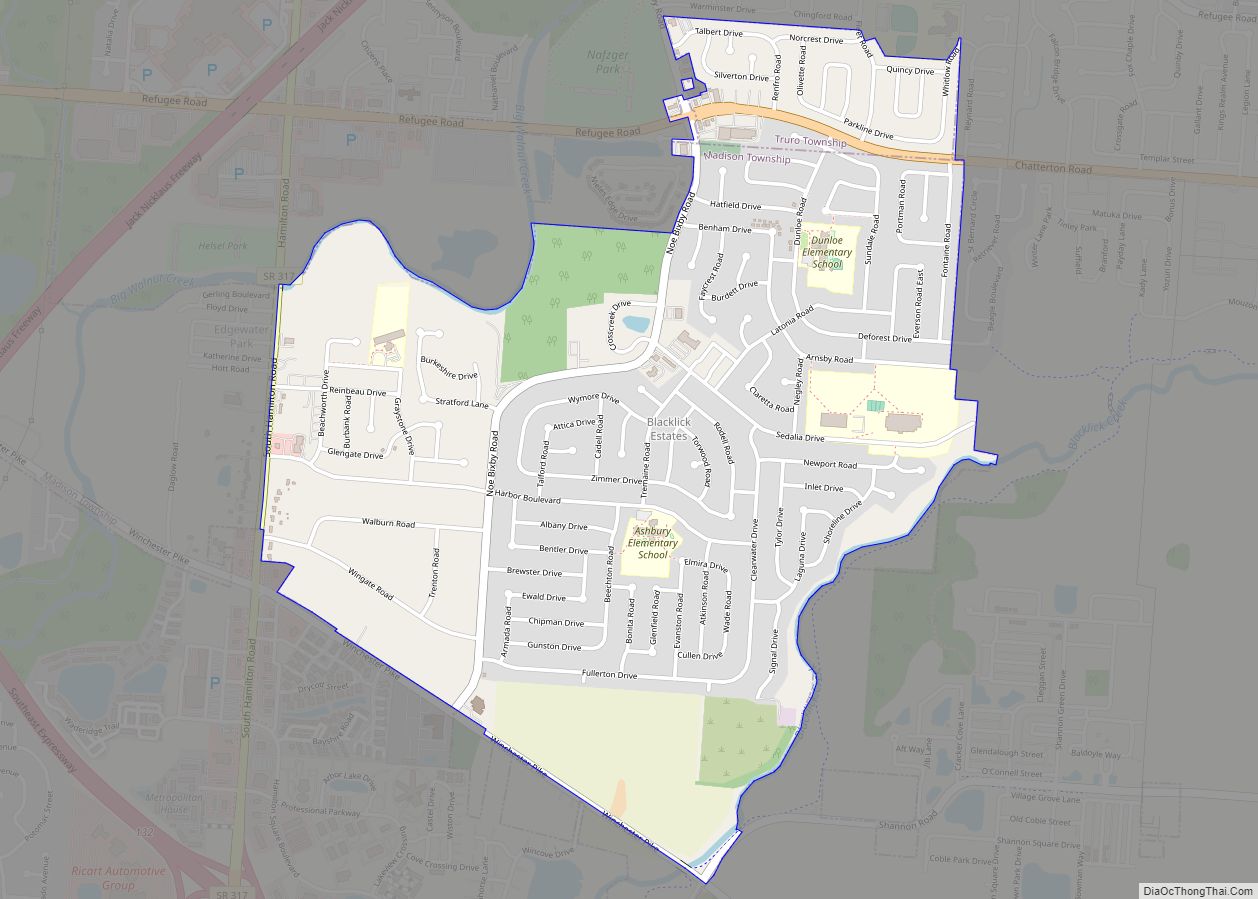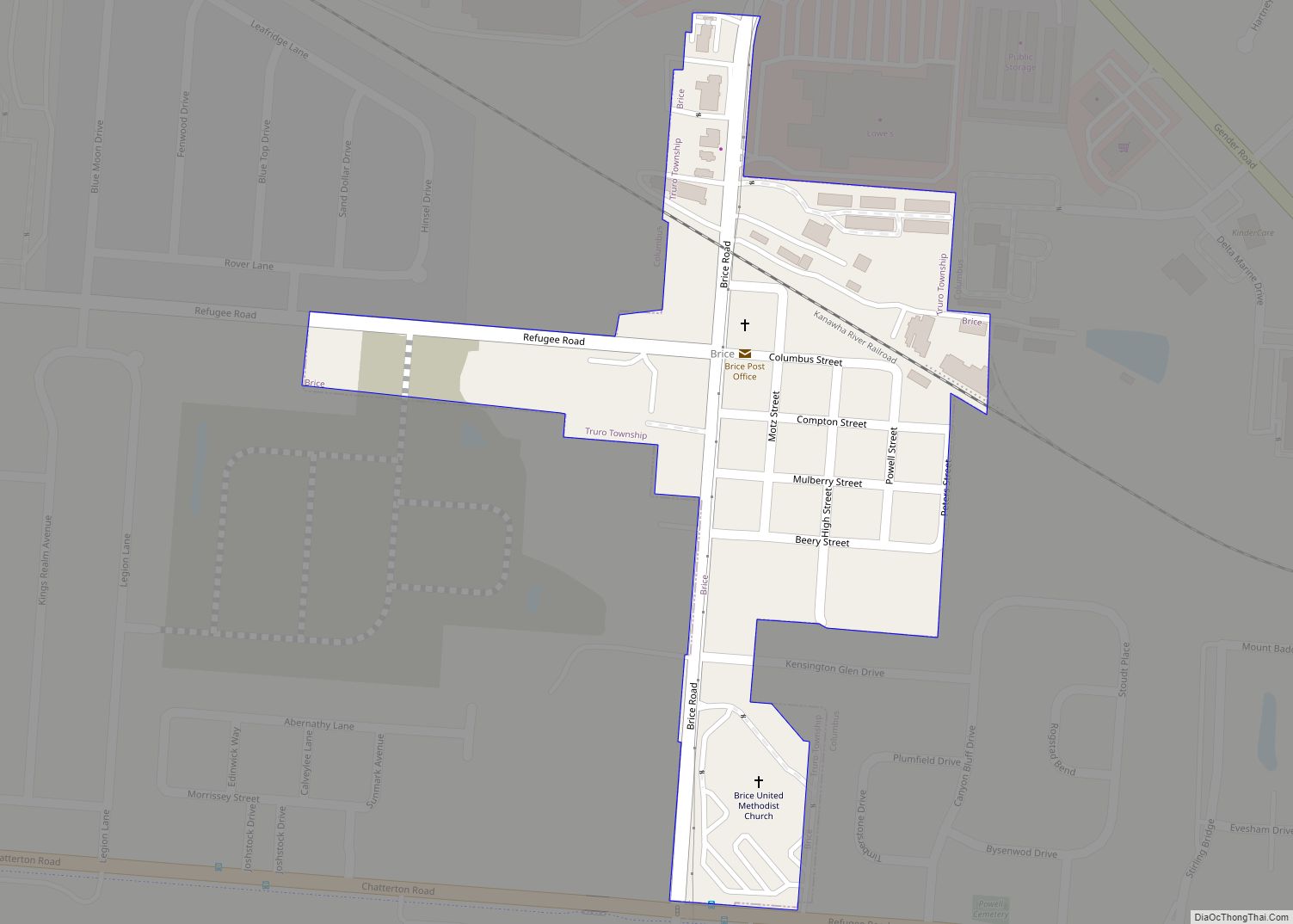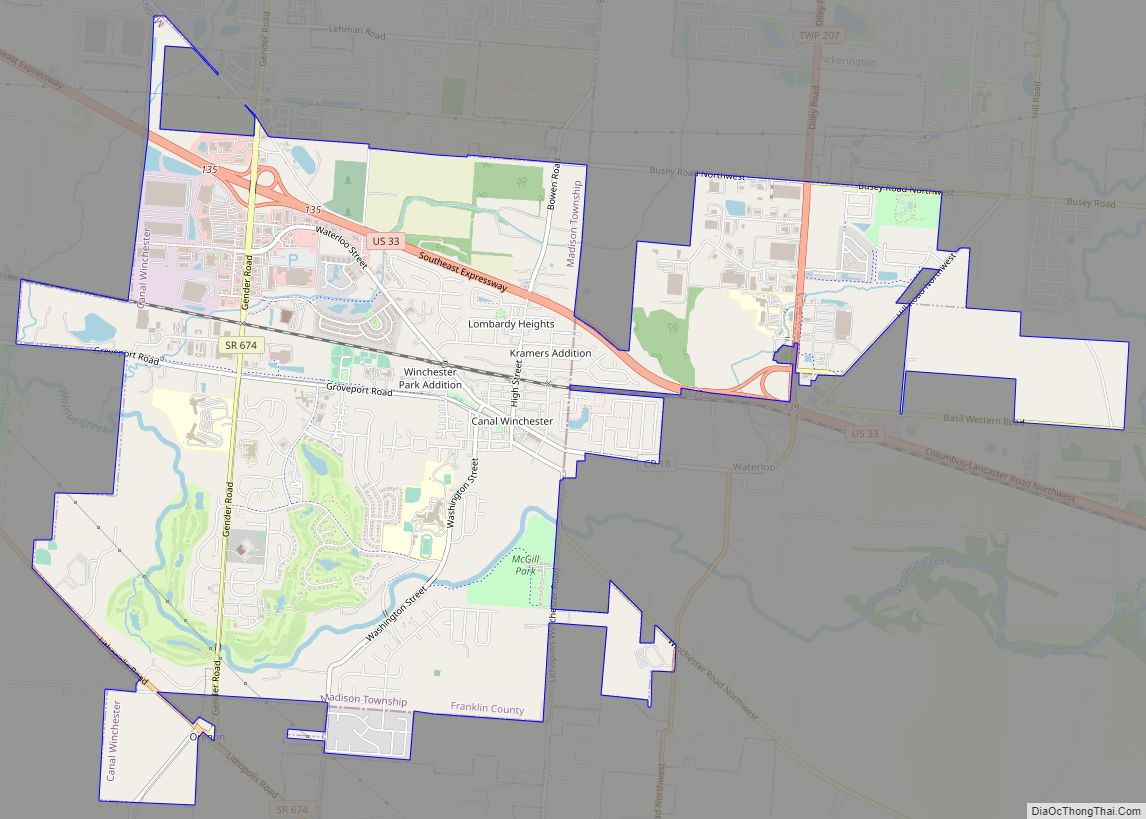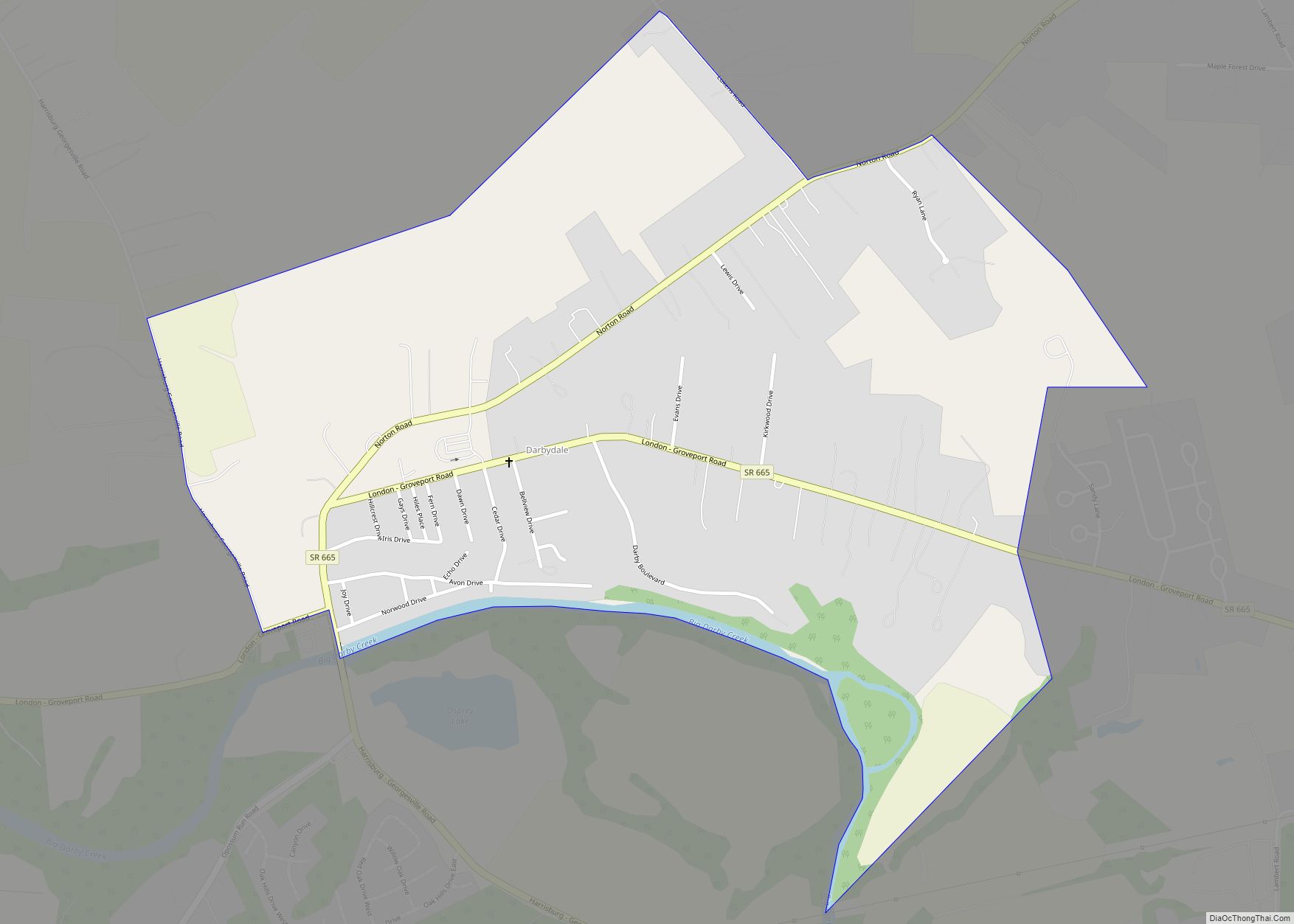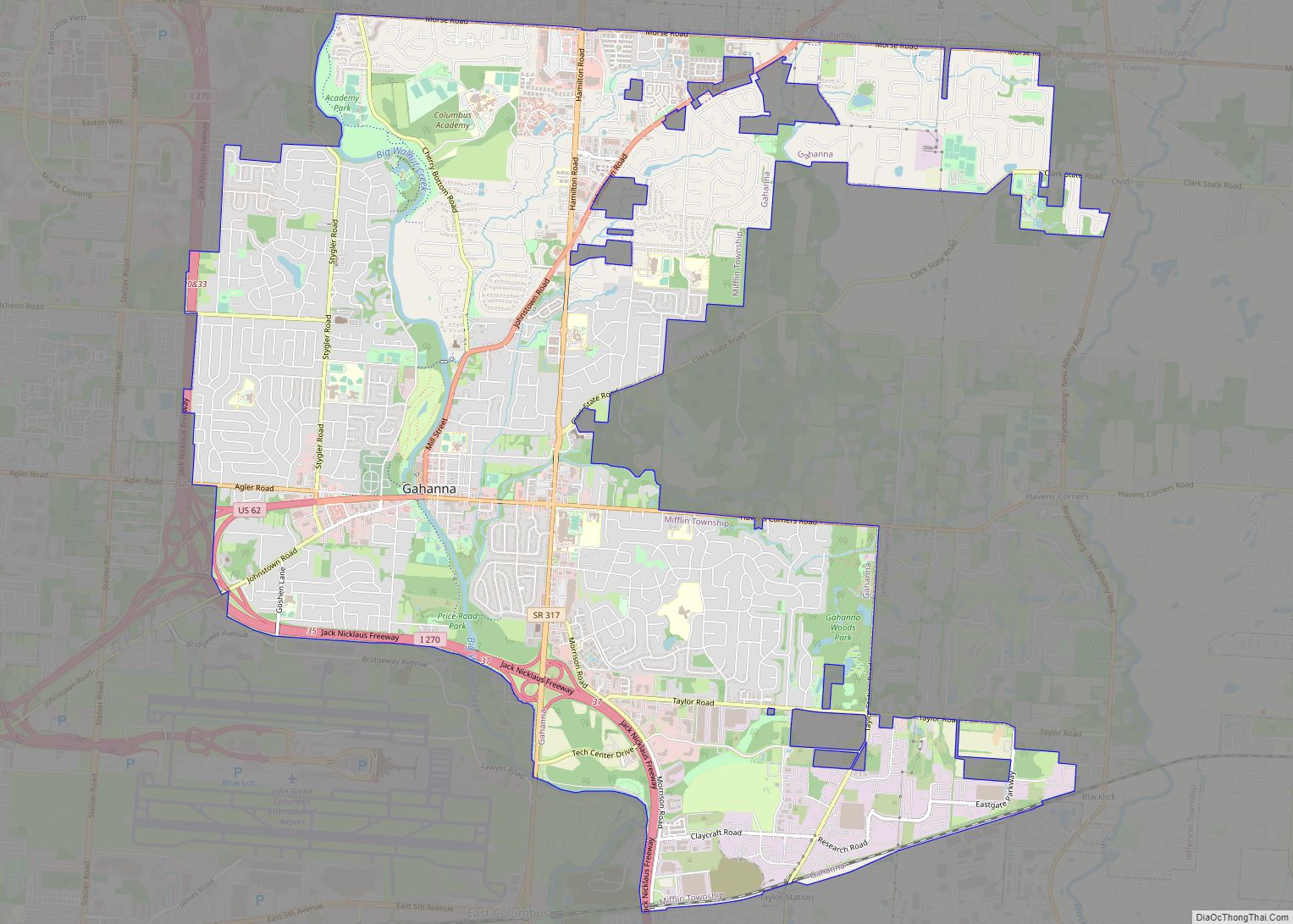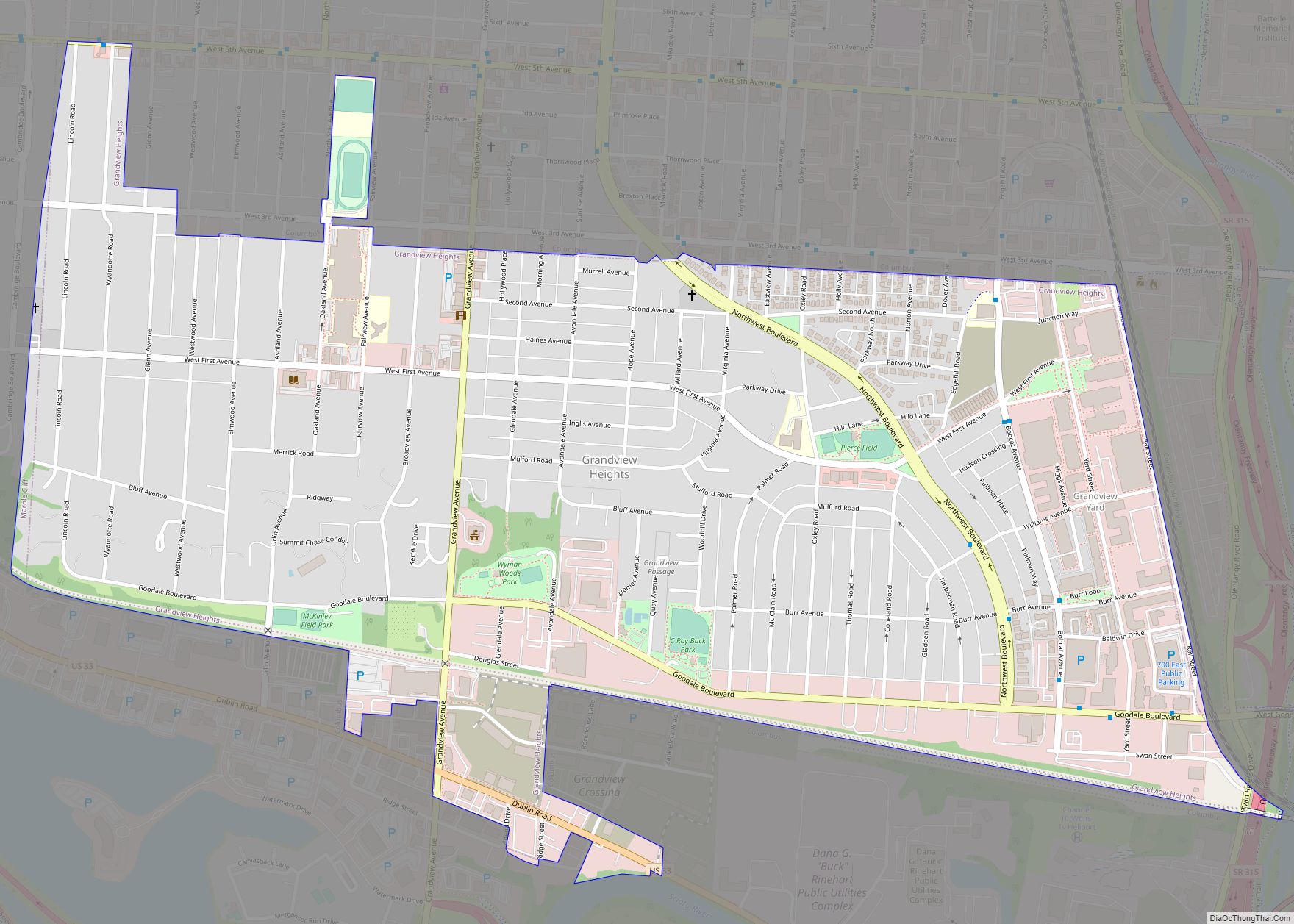Worthington is a city in Franklin County, Ohio, United States, and is a northern suburb of Columbus. The population in the 2020 Census was 14,786. The city was founded in 1803 by the Scioto Company led by James Kilbourne, who was later elected to the United States House of Representatives, and named in honor of Thomas Worthington, who later became governor of Ohio.
| Name: | Worthington city |
|---|---|
| LSAD Code: | 25 |
| LSAD Description: | city (suffix) |
| State: | Ohio |
| County: | Franklin County |
| Elevation: | 863 ft (263 m) |
| Total Area: | 5.55 sq mi (14.37 km²) |
| Land Area: | 5.47 sq mi (14.17 km²) |
| Water Area: | 0.08 sq mi (0.20 km²) |
| Total Population: | 14,786 |
| Population Density: | 2,703.11/sq mi (1,043.62/km²) |
| ZIP code: | 43085 |
| Area code: | 614 |
| FIPS code: | 3986604 |
| GNISfeature ID: | 1056581 |
| Website: | https://www.worthington.org/ |
Online Interactive Map
Click on ![]() to view map in "full screen" mode.
to view map in "full screen" mode.
Worthington location map. Where is Worthington city?
History
First settlement
On May 5, 1802, a group of prospective settlers founded the Scioto Company at the home of Rev. Eber B. Clark in Granby, Connecticut for the purpose of forming a settlement between the Muskingum River and Great Miami River in the Ohio Country. James Kilbourne was elected president and Josiah Topping secretary (McCormick 1998:7).
On August 30, 1802, James Kilbourne and Nathaniel Little arrived at Colonel Thomas Worthington’s home in Chillicothe, Ohio. They tentatively reserved land along the Scioto River on the Pickaway Plains for their new settlement (McCormick 1998:17).
On October 5, 1802, the Scioto Company met in Granby, Connecticut and decided not to purchase the lands along the Scioto River on the Pickaway Plains, but rather to buy land 30 miles (48 km) farther north from Dr. Jonas Stanbery and his partner, an American Revolutionary War general, Jonathan Dayton. Sixteen thousand acres (65 km) were purchased along the Whetstone River (now known as the Olentangy River) at $1.50 per acre (McCormick 1998:19-27). This land was part of the United States Military District surveyed by Israel Ludlow in 1797 and divided into townships 5 miles (8.0 km) square.
On April 29, 1865, at Appx 6:50 AM, President Abraham Lincoln’s funeral train passed thru Worthington en route to the Ohio Statehouse in Columbus.
Organization
On May 7, 1803, James Kilbourne arrived at what is now Worthington to inspect the Scioto Company’s purchase. A work party of seven hired laborers, paid $12 per month each, soon began work clearing the forest (McCormick 1998: 29).
On August 10, 1803, the Scioto Company voted to name the village for Thomas Worthington, one of Ohio’s first two senators, and for each member to contribute $2 (about four days wages) to support a library.
In September 1803 the first settlers departed Connecticut by horse. Ezra Griswold was the lone settler who traveled by ox-cart. With this he is officially the first settler of Worthington, beating his fellow Company men to the site. By December 1803, Worthington was divided into 160, three quarter acre city lots with a 5-acre (20,000 m) public green in the center of the village. Thirty seven persons bid between $53 and $0.25 to select a lot. Those who bid nothing were given a choice of the remaining lots.
Farm lots, ranging from 20 to 130 acres (0.53 km) and averaging 93 acres (380,000 m), were sold off in the same way. Both the Episcopal Church and Worthington Academy were given an 80-acre (320,000 m) farm lot and 20-acre (81,000 m) wood lot to provide financial support.
Dissolution of the Company
By August 11, 1804, the plat maps were completed, payments or notes promising payments collected and deeds prepared for all sixteen thousand acres (65 km) of the Scioto Company’s purchase (McCormick 1998:71). On January 28, 1805, having completed its work of apportioning land and establishing the church, school and library, the Scioto Company was dissolved (McCormick 1998:76).
Incorporation
On February 20, 1808, the Worthington Academy was incorporated by the Ohio legislature and a brick building was constructed facing the northeast quadrant of the public square. Its bell now adorns Kilbourne Middle School. That same year James Kilbourne erected a commercial building for a newspaper. This building still stands at 679-681 High Street as the oldest commercial building in continuous use in the state.
In 1811, Ezra Griswold built a large south-facing brick tavern on the lot north of the northeast quadrant of the public square. That same year, the Orange Johnson house was constructed north of the Village Green.
War of 1812
During the War of 1812, several Worthington militia marched north with General William Hull’s army and were surrendered at Detroit on August 12, 1812. Orders issued by General William Henry Harrison from “Northwest Army Headquarters, Worthington, Ohio” on October 28, 1812, indicate the commander, like his supply wagons, was using the road north from the capital. On September 7, 1814, Zophar Topping died while serving with Indian scouts. He was one of two Worthington casualties during the war along with Luther Palmer.
Growth
On May 24, 1813, James Kilbourne took a seat in the United States House of Representatives.
On August 25, 1817, President James Monroe visited Worthington. Also in 1817, Philander Chase moved to Worthington to become the first rector of St. John’s Episcopal Church. He concurrently served as rector of Episcopal churches in Columbus and Delaware and as principal of the Worthington Academy. In June 1818, Rev. Chase was elected Bishop of the newly organized Episcopal Diocese of Ohio. Chase initially founded Kenyon College in Worthington.
The period from the 1820s to the Civil War was a time of slow growth for the sleepy village. In 1820, Aurora Buttles erected a Masonic hall. In 1826 the Columbus and Sandusky Turnpike was incorporated (now U.S. Route 23) to connect the center of the state to Lake Erie, further cementing the importance of High Street.
Civil War
In September, 1861 Captain William Pinney and 14 members of the “Olentangy Reserves” mustered into Company E of Thomas Worthington Jr.’s 46th Ohio Volunteer Infantry, which trained at Camp Lyon on the old Worthington Manufacturing Co. site southwest of the village. This unit suffered forty percent casualties at the Battle of Shiloh in April 1862.
Post-war growth
In 1866 the Bishop House was converted to the Union Hotel (Worthington Inn) by the Lewis family. In 1873 the Worthington School located at Evening Street and State Route 161 was completed. The first Worthington High School class graduated in 1880 (including 2 girls).
In 1931, the only Roman Catholic pontifical college outside of Italy, the Pontifical College Josephinum relocated just north of Worthington where it exists today.
Worthington Road Map
Worthington city Satellite Map
Geography
Worthington is located at 40°5′29″N 83°1′15″W / 40.09139°N 83.02083°W / 40.09139; -83.02083 (40.091513, -83.020905).
According to the United States Census Bureau, the city has a total area of 5.63 square miles (14.58 km), of which 5.55 square miles (14.37 km) is land and 0.08 square miles (0.21 km) is water.
The cities of Worthington and Riverlea form an enclave of Columbus.
Highways that pass through or adjacent to Worthington include Interstate 270, United States Route 23, Ohio State Route 161, and Ohio State Route 315.
Interstate 71 and Ohio State Route 710 pass just to the east of the city.
Except for a small border with Perry Township (Brookside Estates) on the west, Worthington is completely surrounded by Columbus.
Western Worthington now includes part of what used to be Linworth, and is home to the Linworth Alternative Program school.
See also
Map of Ohio State and its subdivision:- Adams
- Allen
- Ashland
- Ashtabula
- Athens
- Auglaize
- Belmont
- Brown
- Butler
- Carroll
- Champaign
- Clark
- Clermont
- Clinton
- Columbiana
- Coshocton
- Crawford
- Cuyahoga
- Darke
- Defiance
- Delaware
- Erie
- Fairfield
- Fayette
- Franklin
- Fulton
- Gallia
- Geauga
- Greene
- Guernsey
- Hamilton
- Hancock
- Hardin
- Harrison
- Henry
- Highland
- Hocking
- Holmes
- Huron
- Jackson
- Jefferson
- Knox
- Lake
- Lake Erie
- Lawrence
- Licking
- Logan
- Lorain
- Lucas
- Madison
- Mahoning
- Marion
- Medina
- Meigs
- Mercer
- Miami
- Monroe
- Montgomery
- Morgan
- Morrow
- Muskingum
- Noble
- Ottawa
- Paulding
- Perry
- Pickaway
- Pike
- Portage
- Preble
- Putnam
- Richland
- Ross
- Sandusky
- Scioto
- Seneca
- Shelby
- Stark
- Summit
- Trumbull
- Tuscarawas
- Union
- Van Wert
- Vinton
- Warren
- Washington
- Wayne
- Williams
- Wood
- Wyandot
- Alabama
- Alaska
- Arizona
- Arkansas
- California
- Colorado
- Connecticut
- Delaware
- District of Columbia
- Florida
- Georgia
- Hawaii
- Idaho
- Illinois
- Indiana
- Iowa
- Kansas
- Kentucky
- Louisiana
- Maine
- Maryland
- Massachusetts
- Michigan
- Minnesota
- Mississippi
- Missouri
- Montana
- Nebraska
- Nevada
- New Hampshire
- New Jersey
- New Mexico
- New York
- North Carolina
- North Dakota
- Ohio
- Oklahoma
- Oregon
- Pennsylvania
- Rhode Island
- South Carolina
- South Dakota
- Tennessee
- Texas
- Utah
- Vermont
- Virginia
- Washington
- West Virginia
- Wisconsin
- Wyoming
